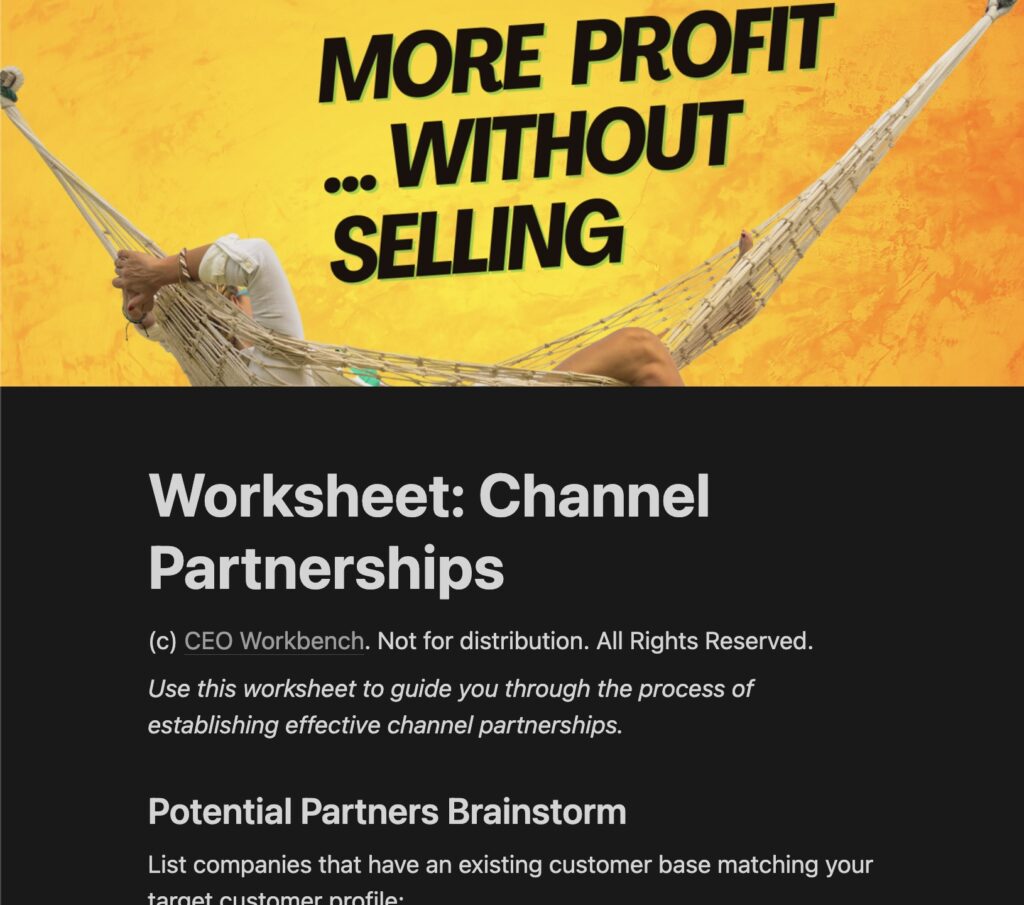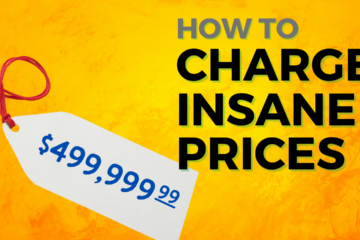You’re grinding to get more customers. Cold calls, social media, sales sales sales… But despite running yourself ragged, new customers still seem painfully slow to come. What if I told you there’s a way to dramatically multiply your customer count without burning yourself out?
What if I told you that I used to be an executive hired to build this exact kind of machine – resulting in 2x the number of customers a regular sales team could close?
Enter: channel partnerships.
Channel partnerships are when you team up with other businesses to access their customers. Instead of selling directly to end users, you sell through a channel partner who delivers your offering to their existing customer base. This opens up entirely new avenues of customer acquisition by leveraging your partners’ efforts instead of trying to do all the heavy lifting yourself.
I was hired for Strategic Partnerships because I’d spent a decade negotiating these deals. And it was time for my new company, Reef, to ramp up sales. Now you get the benefit of that:
I’ll describe what they are, how to create them, and then give you a free worksheet so you can shortcut finding the right partners for your business.
Why Channel Partnerships Are a Game Changer
Relying solely on direct sales forces you to start from scratch with each new customer. You have to generate leads, nurture prospects, and guide buyers through every stage of the sales process. That require tremendous time and effort – and you’re limited to the number of leads you can generate on your own.
You become the bottleneck.
Channel partnerships blow the doors wide open. By accessing an established company’s customer pipeline, you can quickly scale the number of customers and revenue with far less hands-on work.
Here’s why this strategy can supercharge your sales efforts:
1. Get Instant Access to Qualified Leads
Cold leads are hard to convert. With channel partnerships, the leads are pre-qualified. They’re already customers of a partner who knows them well. You already know referrals are the highest quality leads out there. Channel partners are referrals on steroids.
2. Leverage Existing Trust
Your partner has already established trust and credibility with their customers. Now you get to ride on the coattails of that hard-earned goodwill. Customers are more likely to buy from a familiar source.
3. Let Your Partners Do the Heavy Lifting
Why try to scale a sales and marketing team when your partners already have an existing process? They include your product in their sales materials, email campaigns, and client communications. It’s not hands off (more on that later) – but it’s a great form of leverage.
4. Gain Customers in New Markets
Every partnership opens a doorway to an entirely new customer segment. You’d spend a small fortune trying to reach and win those customers through traditional channels. Not just in marketing dollars, but in trying to deeply understand that segment and spending time trying to figure out the channel.
How to Identify the Right Potential Partners
With so much to gain from partnerships, how do you pinpoint the best companies to team up with? Here are 3 characteristics to look for:
1. Existing Customer Base with Demand for Your Product
This one’s obvious but essential. Your partner should have a large base of customers that map closely to your ideal customer profile. Even better if their clients have already expressed demand for a product like yours. See the worksheet for more on how to think through this.
2. Non-Competing Products and Services
You want to identify partners, not competitors. Seek out companies that offer complementary, non-overlapping products and services. This way you’re expanding each other’s ecosystem instead of just stealing market share.
3. Strong Reputation and Industry Connections
Well-respected partners give you instant credibility with their customers. And companies with large networks provide access to their extensive web of connections. Make sure their values align with yours and your company’s. Then leverage their reputation and reach for maximum impact.
Crafting Win-Win Partnership Proposals
Once you’ve identified prospective channel partners, it’s time to make your pitch. The key is crafting a compelling win-win proposal. Here are proven tips for putting together a partnership proposal that closes deals:
1. Do Your Homework
Remember that partnering isn’t always an obvious choice for them. While you’re short-cutting direct selling you still need to sell the partner on the idea. Take time to thoroughly understand each prospective partner’s business model, pain points, and goals. This allows you to tailor a pitch that solves their specific problems.
2. Focus on How the Partnership Benefits Them
Don’t get overly distracted selling them on why your product is great. Explain how partnering with you helps them achieve their business objectives. Make it all about them. Once they’re sold on that, then you bring in why your product is the right one to get them there. But start with them, not you.
3. Limit Required Effort on Their End
The easier you make the partnership, the more receptive partners will be. Develop turnkey materials and programs that require minimal heavy lifting from them. Remember, their organization is going to have a lot of inertia. They’ve been doing things without you for a while. For example, sales reps won’t know who you are and why it benefits their customers to pitch your solution.
4. Offer Incentives and Perks
Special discounts, bonuses, and added perks make the partnership more enticing. Sweeten the deal for them. This goes for their sales reps too – unless reps are comped on selling your stuff, don’t expect much traction
5. Outline a Clear Revenue Sharing Model
Define the compensation structure upfront so they immediately grasp the revenue opportunity. Make sure it’s generous enough to get them excited. Build in checkpoints so that you can tune what’s working best.
Managing Partnerships for Maximum Impact
You worked hard to establish these strategic partnerships. Now it’s time to manage them for continued growth and profitability:
1. Assign Partnership Managers
Appoint internal reps to manage partnerships as their full-time role. Partnerships are NOT set and forget. They require attention to be successful. This ensures your partners receive the dedicated focus and support they deserve.
2. Set Clear Objectives and Metrics
Work with each partner to define shared objectives, performance metrics, and processes to track progress. This keeps everyone aligned. Check in on those metrics at checkpoint meetings.
3. Communicate Openly and Frequently
Set recurring meetings and calls to touch base, address concerns, brainstorm improvements, and keep the relationship strong. Make them feel valued.
4. Collaborate on Marketing Campaigns
Work together on co-branded campaigns and content to educate their audience and promote the partnership’s shared offering. This amplifies reach and impact.
5. Make Partners Look Like Heroes
Provide exceptional service, resources, and support that helps their customers succeed with your product. When partners look good, the relationship thrives.
6. Continuously Refine the Partnership Model
Solicit regular feedback to identify ways to improve the partnership and increase mutual revenue. As their needs evolve, evolve the partnership model.
Time to Stop Doing it Alone
If constantly chasing new customers has you burned out, channel partnerships can be a whole different way to approach customer acquisition. When you reduce the burden on yourself and get leads through trusted partners, you’ll be working smarter, not harder to get new customers and revenue.
Want a free worksheet to launch your first successful partnership? You can find it at CEOworkbench.com.



